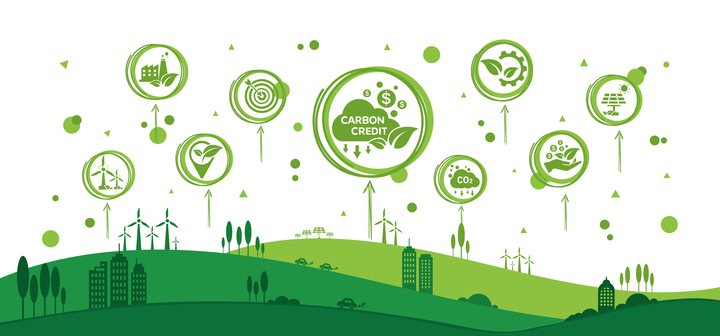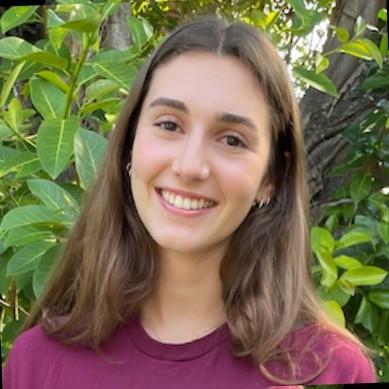First-Year Students Expand Research Interests through Compendium Project at the MCSC
April 3, 2024

Through the MIT Undergraduate Research Opportunities Program (UROP), first-year students have been working with the MIT Climate & Sustainability Consortium (MCSC) on a compendium project that allows them to explore diverse sustainability topics. The UROP program at the MCSC is an opportunity for undergraduate students to work with postdoctoral impact fellows and representatives from member companies on sustainability-related issues they are passionate about. The flexible model of this program allows students to chose project topics that resonate with their academic studies, interests, and passions. The projects align with the MCSC’s pathways and the students have the opportunity to collaborate with the Impact Fellows leading the work.
A compendium, or collection of concise but detailed information about a particular subject, is typically used to summarize a larger body of work in a succinct manner. In this case, at the MCSC, students each contributed to the compendium through a literature review, which resulted in an entry to a larger piece that will be used by researchers at the MCSC in the future. The document features overviews of the topics so that future UROPs and Impact Fellows who are unfamiliar with the topics can learn more.
Students, who worked with the MCSC throughout MIT’s recent Independent Activities Period (IAP) in January, ended up preparing their own entry for the compendium. This consisted of reaching out to MIT Libraries, as well as completing revisions in collaboration with Impact Fellows and other subject matter experts. They completed their work with a five-minute lightning talk on their topic to MCSC Impact Fellows, staff, MCSC community undergraduate researchers and their supervisors, and other students participating in the compendium project. A few students also got the opportunity to present the outcome of their research at MIT’s 2024 Winter Climate Showcase earlier this month. The MCSC News team caught up with a few of the students who recently completed their projects to learn more about their experience working with the MCSC, main takeaways, and future aspirations.
Green bonds and climate finance
Elise Echarte, a first-year student with an interest in the intersection of finance and sustainability, chose to focus on green bonds for her compendium entry, working with Aneil Tripathy, the MCSC Impact Fellow leading the Climate Finance pathway. Green bonds are debt securities that are used to finance or refinance green projects, and Elise found them particularly interesting because they make up a relatively small and new market. Her goal was to analyze their future potential.

When she began her work, she was focusing more narrowly on defining green bonds, but as her research continued, she began to expand her research to include their impact and the pricing differences they exhibited.
“So far, I have been very indecisive when it comes to deciding my major, and my work at MCSC reaffirmed this indecision,” Elise explained. “I have always known I wanted to work in climate and sustainability in some capacity, but working at the MCSC showed me the endless forms that this can take on. Despite doing a lot of work in the climate finance field, Aneil Tripathy’s PhD was in anthropology, and I found this trend of interdisciplinary work at MCSC to be quite common. It encouraged me to continue exploring before committing to a major.”
Although Elise was focused on the climate finance pathway, she had the opportunity to gain exposure to the other work happening throughout the Consortium.
“It was great to mentor Elise on a financial instrument that has been central to my research,” said Aneil. “We were able to cover a range of green bond research topics from definitions to pricing and reporting. Elise was also able to support developing research on green bond use of proceeds at MIT. The IAP compendium format gave her the chance to synthesize these topics and research into a focused writeup on green bonds.”
“The MCSC worked to create a space for undergraduates to feel comfortable asking questions and partaking in conversations,” Elise concluded.“This experience of getting to not only hear postdocs discuss their research, but also being involved myself, was really exciting.”
Read more about Elise’s compendium entry on LinkedIn.
Evaluating the environmental impact of polymers
Emma Hickman, majoring in Mechanical Engineering, was another undergraduate researcher with the MCSC, and she chose to focus on the differences between synthetic polymers, biopolymers, and recycled polymers in terms of their environmental impact, cost, and availability. Emma worked with Amanda Bischoff, an MCSC Impact Fellow working on the Nature-based solutions pathway. When looking at different papers and life cycle assessments in order to discover these qualities for each polymer type, Emma made sure to embrace the perspectives of three main entities: producers, consumers, and the environment. For example, when looking at the production of synthetic polymers, producers value their cheap production costs, while consumers prioritize high quality over low environmental impact. These trade-offs are very important to highlight when comparing polymer types.

One realization that Emma had throughout her research period was that there is no such thing as an ideal green polymer.
“When comparing biopolymers and recycled polymers with two of my measured quantities, biopolymers have better biodegradability, but recycled polymers have a lower energy consumption,” she explained. “It is up to the producer and consumer to decide what they want to prioritize in terms of environmental impact, cost, and availability when choosing a polymer type.”
Emma’s research has a lot of real-world implications, which was one of the reasons she chose to focus on polymers.
“This research is very applicable to the modern day because modern consumption of goods is increasing, meaning a correlated increase in textiles and plastics,” she said.“There is a need for a more sustainable alternative to synthetic polymers as synthetic polymers are fossil fuel-based and damaging to the environment. I was drawn to the subject because I took solid state chemistry in the fall and had learned a little bit about materials that can and cannot be recycled in terms of their bond type. I found this really interesting, and when I saw this topic, I wanted to learn more”.
“Mentoring Emma allowed us to explore a topic of interest to myself and MCSC member companies, but which I am not involved in day-to-day in my work,” explained Amanda. “The format of this IAP really gave us the opportunity to learn from other fellows and researchers in the consortium and draw on previous work evaluating recycled polymers. It was really a win-win because Emma got to learn about the research process through exploring a topic that interested her, and she produced a great overview contrasting synthetic polymers, biopolymers, and recycled polymers that will act as a good reference for future projects.”
Read more about Emma’s compendium entry on LinkedIn.
